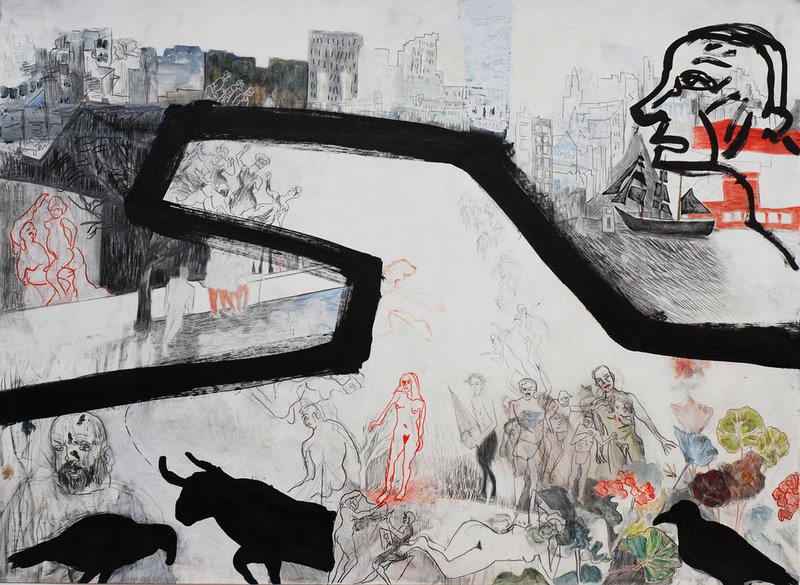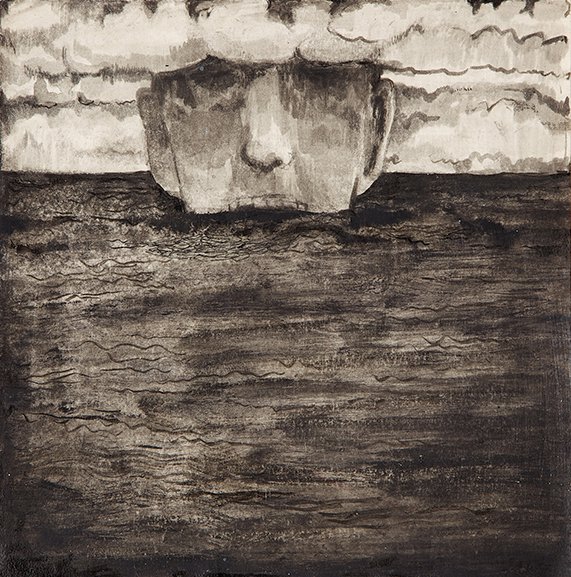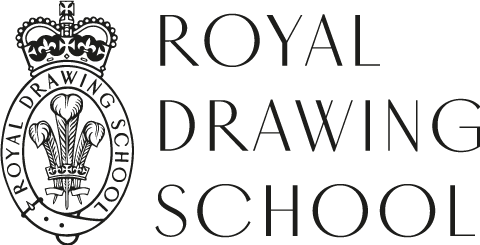Drawing from Home: Imagination & Observation
Taken from the recent publication by the Royal Drawing School, Ways of Drawing, Imagination & Observation is a drawing exercise designed by Catherine Goodman, Founding Artistic Director of the Royal Drawing School, that needs only paper, a pencil and something to draw.

Imagination & Observation
Where: Indoors or outdoors, somewhere you are interested in drawing
In his book Poetry in the Making (1967), the poet Ted Hughs wrote on the important connection between imagination and the physical world: 'Maybe my concern has been to capture...things which have a vivid life of their own, outside mine.' While this connection informed his process as a writer, the same can also be said of drawing imaginatively.
This exercise uses observational drawing as the starting point from which to develop your imaginative drawing skills.
First, choose a subject for your observational drawing. Draw an interior or exterior space; it could be a cityscape or a landscape, a view from inside a room, outside the window or in the open air - anything that interests you which can be drawn from direct observation. Try not to consider how the piece will develop in your imagination at this stage.
When you begin drawing, take time to look carefully at what you see directly before you. Resist the temptation to rush this part of the session, and focus instead on engaging with your subject.

The second part of this session encourages you to trust your imagination. Looking at the drawing you have just made, begin to allow things to happen. Without self-editing, start to introduce elements to your drawing which come to you through your imagined life:
- Draw the drawing you have made from life again and allow a person or people to inhabit it
- Draw your drawing again a second time; this time, add inanimate objects to the scene. Try not to second-guess the new elements you include in your drawing, and be open to the direction in which your imagination takes you. The objects can be any scale or orientation
- Continue as before, this time adding animals to the scene
You can re-draw your original observational drawing as many times as you like, including a new, imaginative element in each drawing. If you prefer, you can add all of these elements - figures, objects, animals - to the same drawing at once.
Your drawing or drawings will evolve as you continue to re-draw without self-consciousness, thinking imaginatively and learning to trust your mind's eye.
The key to this game is not to edit your imagery. Allow anything to happen and keep the exercise going for about an hour - leave the drawings and when your revisit them, keep the ones that interest you, that have some life, and discard the rest.
Tag us in your drawings on instagram @royaldrawingschool or Twitter @RoyalDrawing and use the hashtag #drawingfromhome so we can share your creations!

Catherine Goodman is an artist and the Founding Artistic Director of the Royal Drawing School, which she established with HRH The Prince of Wales in 2000. She studied at Camberwell School of Arts & Crafts and the Royal Academy Schools, where she won the RA Gold Medal. In 2002 she won the National Portrait Gallery's BP Portrait Award First Prize. Recent solo exhibitions include: Catherine Goodman: Portraits from Life, National Portrait Gallery (2014); the last house in the world, Marlborough Fine Art (2016); EVE, Hauser & Wirth Somerset (2019) and the light gets in, Marlborough Gallery, New York (2019). Goodman’s paintings are held in numerous private and public collections including the National Portrait Gallery, the Fitzwilliam Museum Cambridge and the Royal Collection Trust. Goodman was appointed as a Trustee of the National Gallery in November 2019. She is represented by Marlborough Fine Art and currently lives and paints in London and Somerset.
Drawings from top: Melissa Kime, Perienne Christian, Craig Harper



